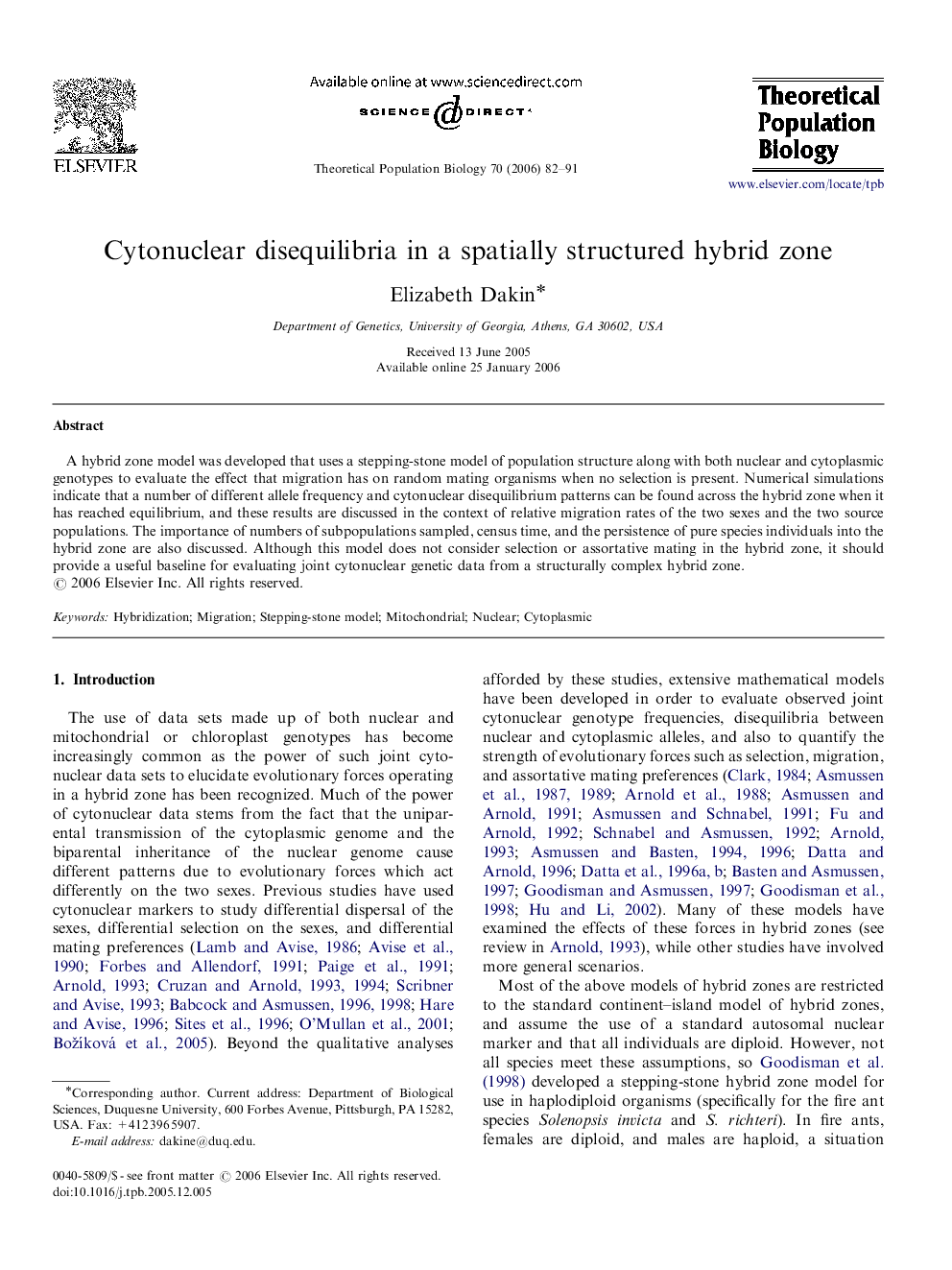| Article ID | Journal | Published Year | Pages | File Type |
|---|---|---|---|---|
| 4503072 | Theoretical Population Biology | 2006 | 10 Pages |
A hybrid zone model was developed that uses a stepping-stone model of population structure along with both nuclear and cytoplasmic genotypes to evaluate the effect that migration has on random mating organisms when no selection is present. Numerical simulations indicate that a number of different allele frequency and cytonuclear disequilibrium patterns can be found across the hybrid zone when it has reached equilibrium, and these results are discussed in the context of relative migration rates of the two sexes and the two source populations. The importance of numbers of subpopulations sampled, census time, and the persistence of pure species individuals into the hybrid zone are also discussed. Although this model does not consider selection or assortative mating in the hybrid zone, it should provide a useful baseline for evaluating joint cytonuclear genetic data from a structurally complex hybrid zone.
